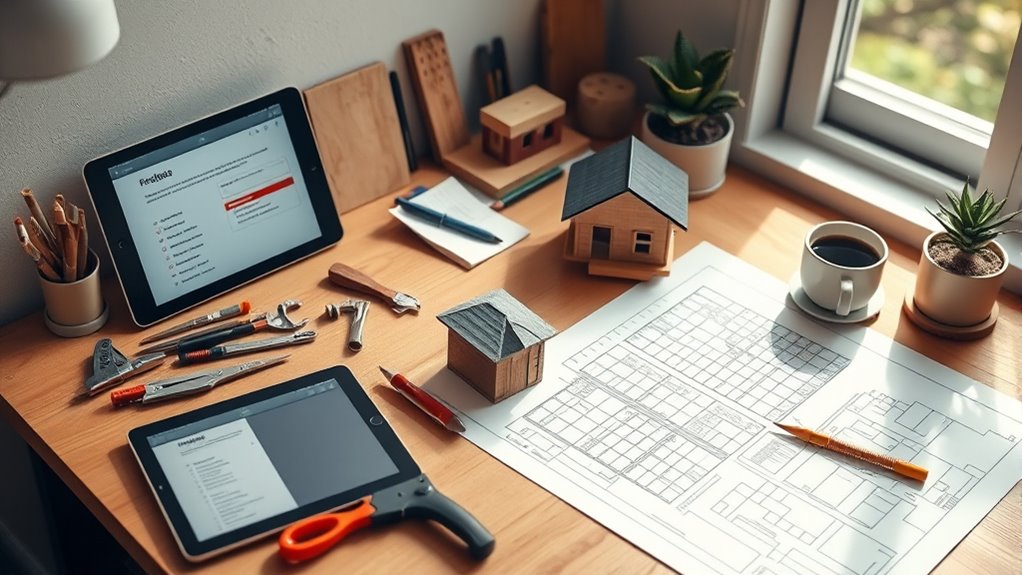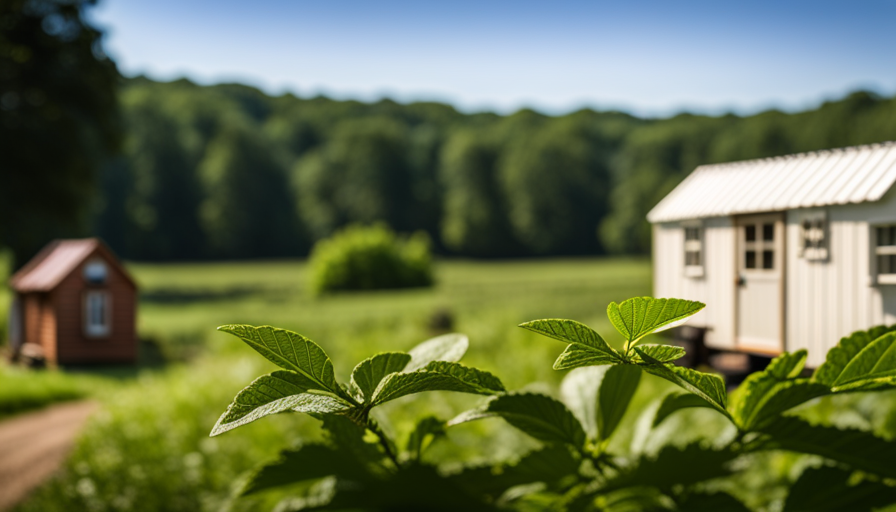To start your first tiny build smoothly, gather essential tools like a power drill, screwdrivers, measuring tape, and safety gear. Plan your project carefully, double-check measurements, and organize your workspace to avoid mistakes. Use quality tools to guarantee durability and safety. Keep costs in check by budgeting wisely, and remember to take your time to prevent errors. Stay cautious and prepared, and you’ll find it easier to turn your tiny build into a success.
Key Takeaways
- Gather essential tools like drills, screwdrivers, measuring tape, and safety gear to ensure precise assembly and safety.
- Plan your build carefully with detailed measurements and steps to prevent costly mistakes and rework.
- Organize your workspace and tools for efficiency, keeping safety goggles and materials within easy reach.
- Avoid rushing and over-tightening screws, and double-check measurements before cutting or assembling.
- Budget wisely by investing in quality tools and safety equipment, and monitor expenses to stay within your budget.

Starting your first tiny build can feel overwhelming, but with the right preparation, it becomes an exciting and manageable project. One of the first steps is understanding your tools overview. Having the right tools on hand makes the process smoother and helps avoid unnecessary setbacks. Basic tools include a reliable power drill, a set of screwdrivers, a measuring tape, a level, and a utility knife. You’ll also want clamps, a square, and safety equipment like goggles and gloves. Investing in quality tools pays off, as they’re more durable and precise, reducing frustration during assembly.
Starting your tiny build? Gather essential tools like a drill, screwdrivers, tape measure, level, and safety gear for a smooth project.
As you gather your tools, it’s important to be aware of common pitfalls. One common mistake is rushing into the build without proper planning. Take the time to measure twice and double-check your plans before cutting or assembling. Using incorrect or dull tools can lead to inaccurate cuts or weak joints, which compromise the entire structure. For example, a dull drill bit can cause the wood to splinter, leading to weak points in your build. Additionally, over-tightening screws might crack the material, so proceed carefully and follow recommended torque levels.
Another pitfall to avoid is neglecting safety precautions. Always wear safety goggles when cutting or drilling, and keep your workspace clean to prevent accidents. Many beginners overlook the importance of organizing tools and materials, which can slow down progress and cause frustration. Keep your workspace tidy and ensure all tools are within easy reach. It’s also wise to familiarize yourself with each tool’s operation before starting, so you’re confident and safe during use. Being aware of cost behavior analysis can help you plan your budget more effectively and avoid overspending on unnecessary tools or materials.
Planning ahead is vital to sidestep common pitfalls. Create a detailed plan, including measurements, materials, and step-by-step instructions. This helps prevent mistakes like ordering the wrong size or quantity of materials. Also, double-check your measurements before cutting – a small error can cascade into bigger issues down the line. Remember, patience is key: rushing through a build often results in mistakes and rework, which can be discouraging for beginners.
Frequently Asked Questions
How Do I Choose the Right Tiny House Model for My Needs?
To choose the right tiny house model, consider your lifestyle and prioritize custom design options that suit your needs. Think about layout optimization to maximize space and functionality. Decide on essential features, like storage or a workspace, and select a model that offers flexibility. Visiting showrooms or talking to builders helps you visualize what fits best. Ultimately, pick a model that balances your budget with your comfort and practical requirements.
What Permits and Legal Requirements Are Needed for Tiny Builds?
Imagine your tiny home nestled between urban and rural landscapes. You’ll need to check zoning restrictions and building codes, which vary by location, to guarantee legality. Obtain permits from local authorities before construction begins. This process might seem intimidating, but staying informed helps you avoid fines or relocations. You must comply with these legal requirements to guarantee your tiny build is safe, legal, and ready to be enjoyed without worry.
How Can I Finance My Tiny House Project?
You can finance your tiny house project through various options like personal loans, RV loans, or specialized tiny house financing options. Make sure to get tiny house insurance to protect your investment. Comparing lenders and understanding interest rates helps you choose the best plan. Some lenders may require a detailed project plan or proof of income, so be prepared. This way, you’ll smoothly fund your dream tiny home.
What Are Common Pitfalls to Avoid During Construction?
You’ll want to avoid foundation issues by double-checking your site’s stability and not rushing the groundwork. Ironically, rushing material selection often leads to problems—choose durable, lightweight materials that suit tiny living. Overlooking these details can cause costly repairs later. Always inspect your foundation thoroughly and pick quality materials to guarantee your tiny home stays solid and safe, saving you headaches and money down the road.
How Do I Ensure Proper Insulation and Energy Efficiency?
To guarantee proper insulation and energy efficiency, choose quality insulation materials like spray foam or fiberglass for walls and roof. Seal all gaps and cracks to prevent drafts, and install a vapor barrier where needed. Follow energy-saving tips such as using programmable thermostats and installing energy-efficient windows. Regularly inspect insulation to maintain its effectiveness, and consider adding additional layers if you notice drafts or heat loss, maximizing comfort and savings.
Conclusion
Now, picture yourself stepping into your cozy tiny space, sunlight dancing through the windows and a sense of accomplishment warming your chest. With your checklist ticked off and your tools in hand, you’re ready to turn your tiny build into a haven. Every nail hammered and every wall painted is a step closer to your dream. Embrace the journey, and soon you’ll be relaxing in your perfect little retreat, feeling proud of your first tiny masterpiece.









